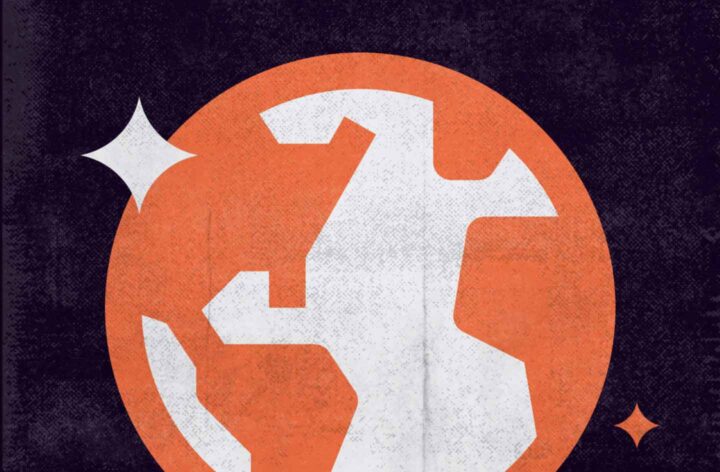Essentials of Futures Market Pricing: How Are Futures Prices Formed?

Besides, understanding the pricing process helps in choosing trading strategies and allows traders to foresee the situation in other markets based on current price movements in the futures market. In short, it’s important to be aware of what factors influence the price of futures and how to keep track of them.
What Determines the Price of Futures?

The main players in the futures markets are buyers and sellers, who shape the supply and demand for a particular commodity or financial instrument.
Supply and demand are the basic factors affecting the price of futures contracts. If the demand for a particular contract exceeds its supply, the price goes up. If the supply for a contract exceeds the demand, the price goes down. The constant interaction between buyers and sellers in the futures markets results in an equilibrium price reflecting the current level of supply and demand.
Other Factors Influencing the Price of Futures Contracts
In addition to supply and demand, the pricing process in the futures markets is affected by many other, less significant factors. The main ones are two major groups of factors: fundamental and technical. The margin requirements also have an indirect influence on the futures prices.
Let’s consider in detail how each of these factors can influence the price of futures contracts.
Fundamental Factors

Fundamental factors are economic, political, and social events that can greatly affect the price of a futures contract. Some of the most important fundamental factors are:
- Economic indicators: inflation, unemployment, GDP, and productivity growth. For example, if statistics show that a country’s economy is growing faster than expected, it could cause the price of futures to rise.
- Political events: elections, wars, terrorist attacks, legislative changes, international relations, and other geopolitical matters. For instance, changes in tax policy regarding the oil industry can affect the supply and demand for oil and, consequently, the price of oil futures.
- Currency fluctuations: changes in currency exchange rates. For example, since oil is predominantly traded in U.S. dollars, fluctuations in the value of the U.S. dollar can have a significant impact on the price of oil futures.
- Monetary policy: the monetary policy of central banks. For instance, if the central bank raises its interest rates, it can increase the cost of borrowing money for businesses and investors, which can lead to lower demand for goods and services, including goods related to the futures market.
- Seasonal factors: fluctuations in supply and demand depending on the time of year. For example, prices of agricultural commodities, such as grain or meat, can fluctuate depending on the season. Similarly, energy prices may vary according to the demand for energy at different times of the year; for instance, fuel prices may increase in the winter because of higher demand for heating.
- Natural disasters: droughts, floods, earthquakes, and hurricanes. Their impact is especially noticeable on futures contracts that are related to agriculture and energy.
Technical Factors

Besides fundamental factors, the price of futures contracts may be influenced by factors associated with technical analysis. Technical indicators are mathematical rules and market behavior patterns based on analysis of charts and statistics, which help predict price movements.
Technical indicators are one of the most popular tools for analyzing price movements in the futures market. They’re used to determine the trend, support and resistance levels, along with identifying overbought and oversold markets.
There are a lot of technical indicators, and each of them has its own features and application. Let’s take a look at some of the most common ones:
- Moving Averages — averages of price data for a specific period of time, which are used to determine the current price in relation to the average price for a certain period of time.
- Relative Strength Index (RSI) — this measures the ratio of the average upward price change to the average downward price change over a certain period of time.
- Stochastic Oscillator — this measures the relative strength or weakness of the price and is used to determine buy/sell signals.
- Relative Vigor Index (RVI) — this measures the strength and direction of price movements, calculated on the basis of price changes and trading volume.
- Volume Indicator — this shows how many contracts were bought and sold during a certain period of time.
One of the key tools of technical analysis is chart patterns, which are a visual representation of certain mathematical regularities that can help in determining possible entry and exit points of the market. Here are some of the most common patterns in the futures markets:
- Double bottom. A pattern that indicates a possible change in the price direction when it reaches two lows on the same level, separated by an interval of price growth between them.
- Head and shoulders. A pattern that indicates a possible change in the price direction when it forms three peaks, with the middle peak higher than the two side peaks.
- Triangle. A pattern that indicates a possible continuation of the current trend when the price forms the upper boundary of a triangle of consecutive peaks and the lower boundary of consecutive lows. The approach of the price to one of the boundaries may indicate a possible change in the price direction.
- Flag. A pattern that indicates a possible continuation of the current trend when the price forms a vertical flag on the chart in which it fluctuates within a narrow range. After that, the price often continues to move in the direction of the current trend.
- Hammer and shooting star. Candlestick patterns that can indicate a potential change in the trend direction. A “hammer” occurs at the bottom of the trend and indicates the possible beginning of an increase in prices, while a “shooting star” occurs at the top of the trend and can indicate the possible beginning of a decrease in prices.
- Doji Star. A candlestick pattern that can indicate a potential change in the trend direction. It consists of a single candle with a long upward shadow and a small body below the opening of the previous candle. This pattern may indicate that the bulls and bears are in equilibrium and that a change in the current trend may be coming.
- Triple top and triple bottom. Chart patterns that may indicate a potential change in the trend direction. “Triple bottoms” occur when prices reach a certain level three times and bounce off that level, which can signal the possible start of a rise in prices. A “triple top” occurs when prices reach a certain level three times and can’t move any further, which could signal the possible beginning of a decline in prices.
- Rising and falling wedge. Patterns that may indicate a potential change in the trend direction. A “rising wedge” occurs when prices move in a narrow range between two downward lines, which may signal the possible beginning of a decline in prices. A “falling wedge” occurs when prices move in a narrow range between two upward lines, which may indicate the possible beginning of an increase in prices.
Technical analysis, based on indicators and chart patterns, can be a useful tool for making decisions when trading futures contracts. However, you should keep in mind that technical analysis is no guarantee of success and must be used in combination with other methods of market analysis.
Margin Requirements

Margin requirements in futures trading refer to the amount of money the trader must have on their account as collateral to open and maintain a position in a futures contract. This is a form of collateral that guarantees that the trader will be able to fulfill their obligations under the contract.
Margin requirements consist of two main components:
- Initial margin. This is the amount required to open a position under the futures contract. The amount of the initial margin is determined by the exchange and depends on the volatility and value of the underlying asset.
- Variation margin. This is extra collateral that the trader may be forced to deposit in their account in case of an unfavorable price movement of the futures contract. The variation margin is calculated based on changes in the value of the position and is updated daily.
If the amount of funds in the trader’s account falls below the required margin, they receive a margin call from the broker. The trader must either add additional funds to the account to meet margin requirements or close the position. If the trader fails to take action, the broker may close the position automatically to limit further losses and reduce the risk of default on the contract.
Margin requirements play an important role in risk management in the futures market, providing stability and reliability of trading. Yet, they affect the price of futures only indirectly by influencing trader behavior, liquidity, and market stability.
All in all, understanding futures market pricing is key to successful trading. Traders who understand how futures prices are formed can analyze the current market situation more effectively and employ various trading strategies, which can lead to higher profits.











